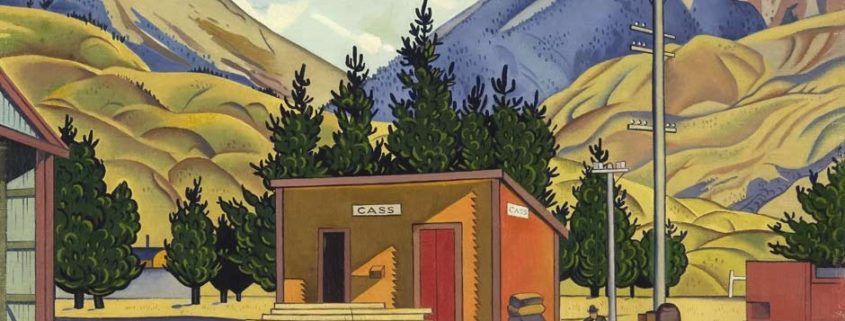CABINS entry by Eliot Blenkarne
“The man alone tends to epitomise existentialism, and, in the words of the academic E. H. McCormick may be defined as “the solitary, rootless nonconformist, who in a variety of forms crops up persistently in New Zealand writing.”
The notion of the single man, living alone, deep in the New Zealand landscape, is a theme that I’ve been interested in my whole adult life, crystallized by the reading of Mulgan’s classic a couple of years back, as well as James Salter’s “Solo Faces”. This is character existing at society’s edge, defined by his stoic laconism. He’s a man, or figure, well known within New Zealand – he is who came here at the turn of the century and worked the land alone, spending great swathes of his life in the oft-bleak, unforgiving landscape of Aotearoa. This is the man who saw the horrors of the Great War, the War that followed a generation later, the social upheaval of globalisation – these impressions kept inside his whole life – Nothing healed, just covered by time.
The landscape he takes refuge in might take the form of the central North Island, or perhaps the grandeur of the Southern Alps. Regardless, the relationship between man and country is at once adversarial, yet rewarding. The land supplies the man, provided he can survive the desperate loneliness and harsh environment. In many ways, this is my father, his father before his and so on back through time. This is a man who is on the brink of extinction, one wholly unconcerned with the frivolities of the modern world and determined to live on their own terms, at any cost.
Alongside this story exists the classic New Zealand built form, taking the form of sheds, cabins and baches, littered across the landscape. Many countries can claim this, but this typology has been studied at length in our architectural history – perhaps the closest thing we have to an architecture “of place”, with our modern vernacular being inspired by this, taking the form of “Elegant Sheds” as they are known locally. These were originally where the Man Alone spent his time, a singular expression of place and time, produced from what the land and forest would allow to be taken.
There is a great deal of writing on both these narratives, so I intend to explore these firstly, to establish a specific story to explore and tell in my works – the challenge being how to weave these themes together in a meaningful manner, without doing disservice to either. Whether it is a replication of what once existed – an ontological inquiry, or a modern interpretation – a final refuge of the trope, remains to be seen.
Artistically, this project will be inspired by New Zealand artists, such as Rita Angus, these post-war painters seeking to illustrate New Zealand in a wholly new, and now emblematic manner. They sought to capture a particularly tumultuous time, as we shifted away from the commonwealth dominion, becoming a country with our own identity. Capturing the environment and landscape will be incredibly important, so guidance from these artists around how to capture the intensely dry summer days of the far south or the misty, damp silence of the deep Urewera bush.
Finally, the technical workflow will be primarily that of real-time, using Unreal Engine. Fully dynamic lighting, using LPV and Distance Fields for soft shadows and AO, though this will be contingent on the quality of output, with reversion to a traditional baked lighting possible. Archicad, Sketchup, 3ds Max, World Machine, Speedtree and Substance suite will also be utilised.
This is just an early concept post, something to get my thoughts on “paper”. I appreciate the slightly dramatic nature of it – I’m not a hugely skilled visualiser, so having something to drive the story is going to be crucial.












